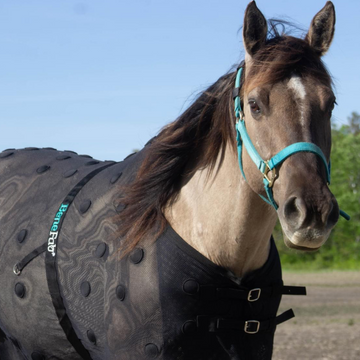Building muscle in horses is an important aspect of their health and performance. As equine athletes, well-developed muscles allow horses to perform various activities, such as racing, jumping, and dressage, easily and gracefully. In order to achieve optimal muscle growth, a delicate balance of factors, including age, nutrition, and training, must be considered.
Importance of Proper Nutrition
Balanced Diet for Muscle Building
A balanced diet is essential for muscle building in horses. The National Research Council provides guidelines for equine nutrition, which should be followed to ensure optimal muscle growth. The key components of a horse's diet include forage, carbohydrates, proteins, vitamins, and minerals.
Forage, such as grass hay and alfalfa, should make up most of a horse's diet. It provides the necessary fiber for proper digestion and can help maintain a healthy weight. Carbohydrates are also an important energy source, especially for performance horses that require more fuel for their rigorous workouts.
Protein and Amino Acids
Protein is crucial for muscle development in horses, composed of amino acids, the building blocks of muscle tissue. A balanced diet ensuring sufficient protein and amino acids is vital for their health and physical performance. Monitoring protein intake is essential, as both deficiency and excess can harm. According to the National Research Council, ideal protein levels vary by age, weight, and exercise. Common protein sources are alfalfa, soybean meal, and beet pulp.
Amino acids, such as lysine, methionine, and threonine, are key for equine muscle growth. Alfalfa and soybean meal are rich sources of these crucial amino acids. Alongside protein, Vitamin E plays a pivotal role. This antioxidant shields muscle cells during exercise and is present in fresh grass, fortified feeds, and supplements.
Key Exercises for Horse Muscle Development
Hill Work
 Hill work is an effective exercise for developing a horse's hindquarters, shoulders, and core muscles. Incorporating gradual inclines and declines in your horse's training can greatly improve their strength and topline. It is vital to properly warm up the horse before starting hill work and to monitor its progress to prevent any injury or strain closely.
Hill work is an effective exercise for developing a horse's hindquarters, shoulders, and core muscles. Incorporating gradual inclines and declines in your horse's training can greatly improve their strength and topline. It is vital to properly warm up the horse before starting hill work and to monitor its progress to prevent any injury or strain closely.
Lunging
Lunging is another key exercise for horse muscle development, particularly for strengthening the horse's topline muscles and improving balance. By lunging in a controlled and consistent manner, you can effectively enhance your horse's muscle coordination and engagement.
Transitions
Transitions are fundamental to developing a horse's core muscles and overall topline. The practice of changing gaits, such as from walk to trot or trot to canter, requires the horse to shift its weight, encouraging proper muscle engagement. Ensuring your horse performs balanced and smooth transitions will improve its overall strength and agility.
Analyzing and Monitoring Horse's Physical Condition
Body Condition Scoring
Body condition scoring is an essential tool used by owners and veterinarians to assess a horse's overall health. This system helps evaluate whether a horse is underweight, overweight, or in optimal condition. An emphasis is placed on evaluating the horse's muscling and fat deposits around the withers, ribs, croup, and pelvis. Regular monitoring of body condition will help identify potential problems early, such as weak muscling due to poor nutrition or muscle wasting from chronic pain.
Lameness and Pain Assessment
When training a horse for muscle building, such as in lunging or dressage exercises, it's crucial to recognize signs of pain or discomfort immediately. Identifying and addressing pain early can prevent further complications in the horse's development and avoid unnecessary suffering.
Saddle Fit Evaluation
An ill-fitting saddle can cause pain and discomfort for the horse and negatively impact the building of muscles. Saddle fit evaluation should be done regularly to ensure the horse's comfort and the rider's safety. A correctly fitted saddle should distribute weight evenly along the back, avoiding pressure points on the withers or croup.
If a horse exhibits signs of discomfort or poor posture while ridden, it may be necessary to have a professional examine the saddle fit. Proper saddle fit can significantly affect the horse's ability to achieve optimal muscling and overall physical performance.
Customized Muscle-Building Strategies
Young Horses and Foals
When it comes to young horses and foals, muscle-building strategies should be age-appropriate and consider their stage of growth. Regular exercise that includes free play and structured activities, such as lunging and ground driving, is essential for promoting natural muscle development.
Older Horses and those with Chronic Pain
For older horses or those experiencing chronic pain, a tailored muscle-building approach is necessary to prevent injury and ensure an appropriate activity level. The focus should be on low-intensity, low-impact exercises that help maintain muscle tone without causing unnecessary stress. Aqua therapy, for example, offers an excellent low-impact workout for older horses.
Incorporating gentle massage and stretching exercises into the horse's daily routine can help alleviate muscle stiffness and improve the range of motion. Moreover, working with a veterinarian or equine nutritionist to adjust the diet can help optimize nutrient intake, reducing inflammation and supporting muscle health in older horses and those with chronic pain.
Supplementation for Optimal Horse Muscle Building
Adding supplements to your horse’s diet should be done with care and consideration for the individual horse’s needs. If you’re unsure, consult your veterinarian before introducing anything new.
Protein Supplements
Protein supplements can play a crucial role in equine nutrition, providing essential amino acids for muscle building and repair. Common essential amino acids for horses include lysine, methionine, and threonine. These amino acids contribute to muscle metabolism and overall horse health. Many horse protein supplements are derived from soybeans, offering high-quality protein with balanced amino acid profiles.
Omega-3 Fatty Acids
Omega-3 fatty acids play a significant role in a horse's muscle health, helping to reduce inflammation and support muscle repair. These essential fatty acids contribute to the overall energy metabolism of the horse, offering various health benefits.
Some sources of omega-3 fatty acids for horses include flax seeds, chia seeds, and fish oils. Supplementing omega-3 fatty acids in a horse's diet can improve their muscular and cardiovascular health and enhance their immune system.
Promoting Consistent Exercise and Wellbeing
As a horse owner or trainer, ensuring proper muscle development in your horses is crucial for enhancing their performance and overall well-being. Focusing on regular exercise and proper nutrition plays a vital role in successful muscle building for horses.
One key component in helping horses achieve their desired muscle mass is incorporating consistent exercise into their daily routine. Regular exercise enables horses to build strength, burn fat and develop lean muscle mass. To accomplish this, implement a workout regimen that includes cardiovascular exercises such as trotting, jogging, and extended gallops alongside flexibility and balance-enhancing workouts.
It is important to be mindful of the horse's energy levels during exercise to prevent fatigue. Overworking a horse can lead to injuries, hinder muscle development, and negatively influence performance. Focus on gradually increasing exercise intensity and monitoring their energy levels, making adjustments as necessary. (Use the Benefab® SmartScrim and SmartHood to keep your horse comfortable during their increased exercise)
Proper nutrition is another vital element that contributes to muscle building in horses. It directly influences muscle mass, energy production, and strength in horses. Feeding a well-balanced diet rich in essential nutrients like proteins, carbohydrates, vitamins, and minerals will allow horses to utilize their energy for muscle-building effectively.
Promoting regular exercise and well-being in horses revolves around regular exercise routines and proper nutrition. These factors, when appropriately managed, will result in improved muscle mass, strength, and performance in equine athletes.






















